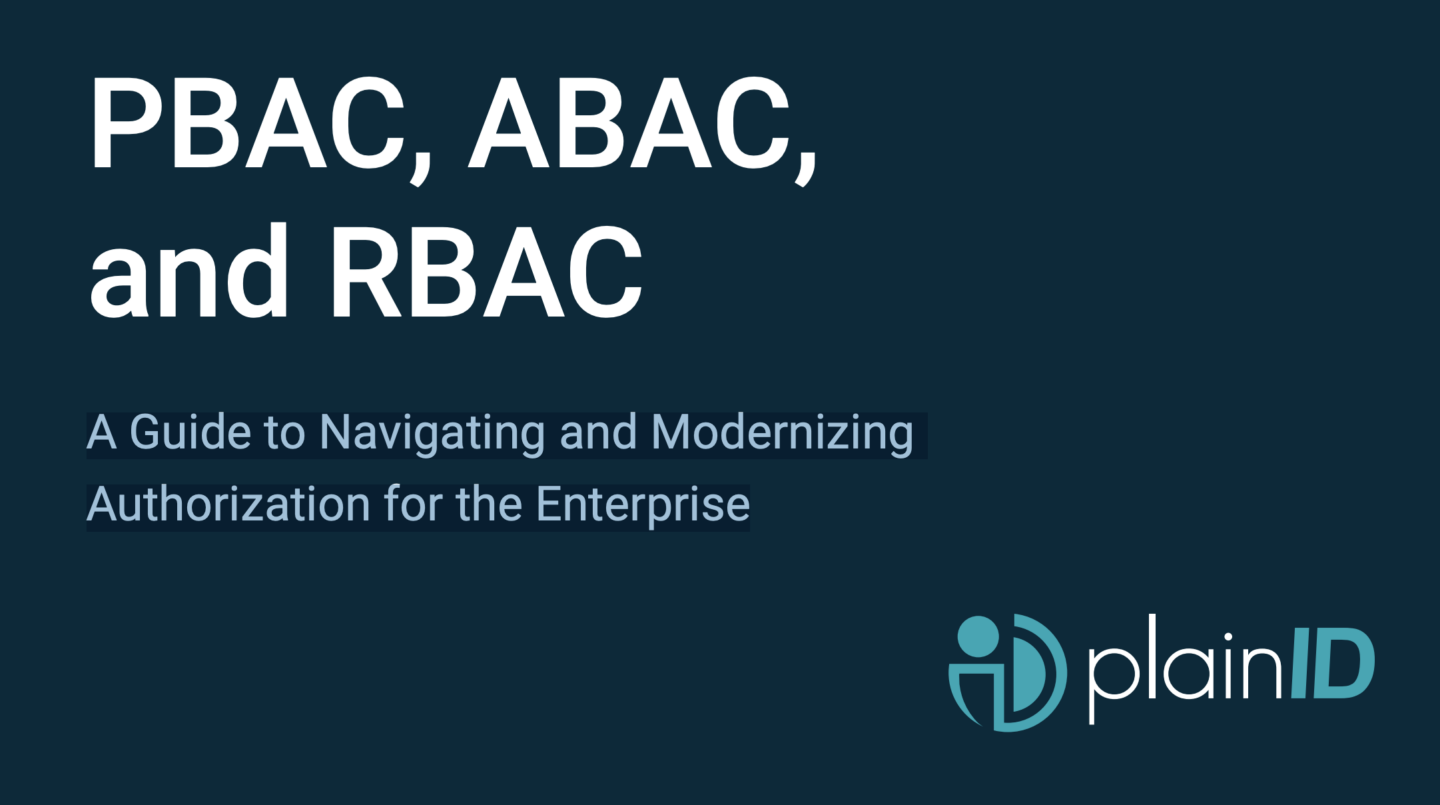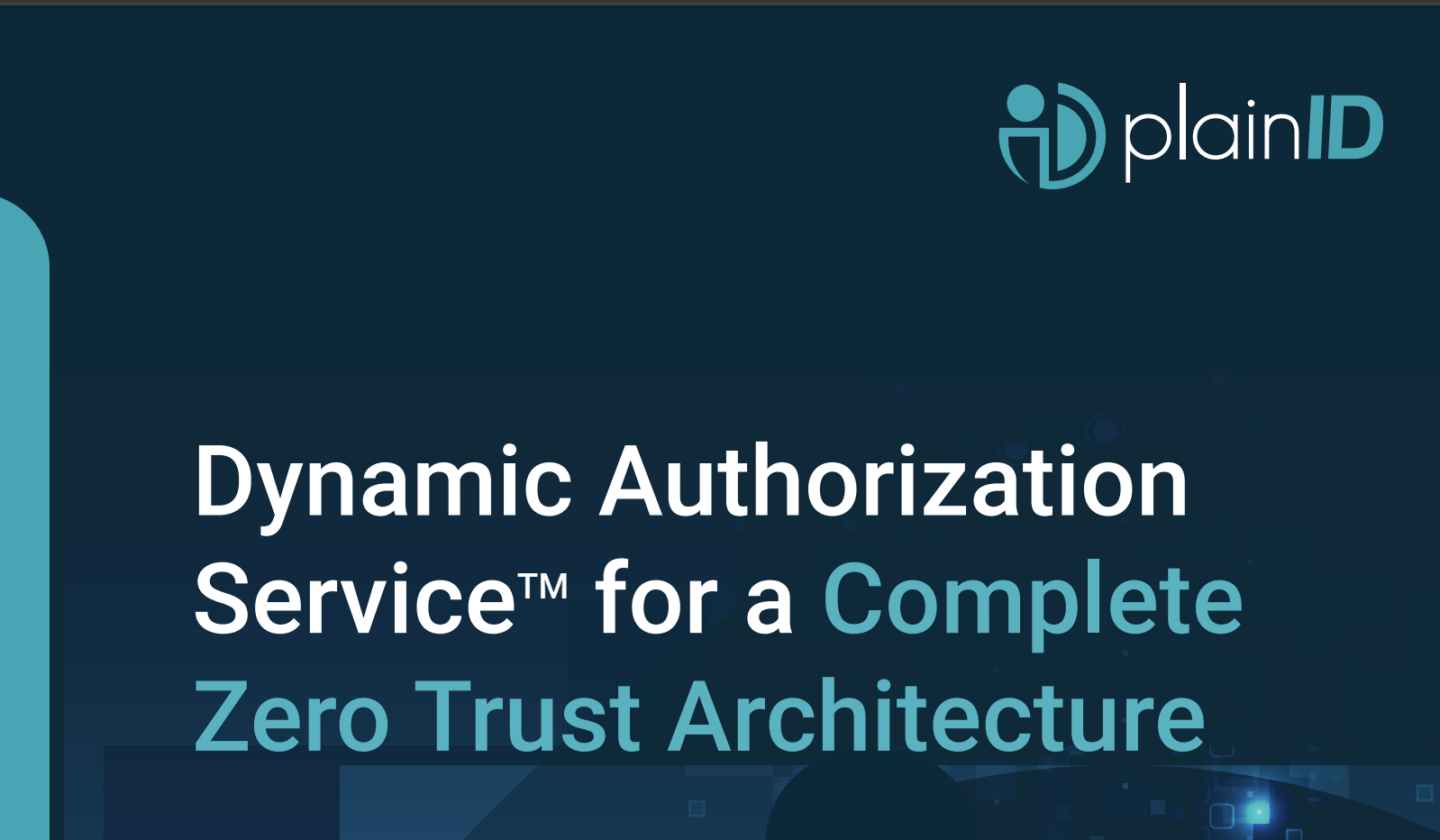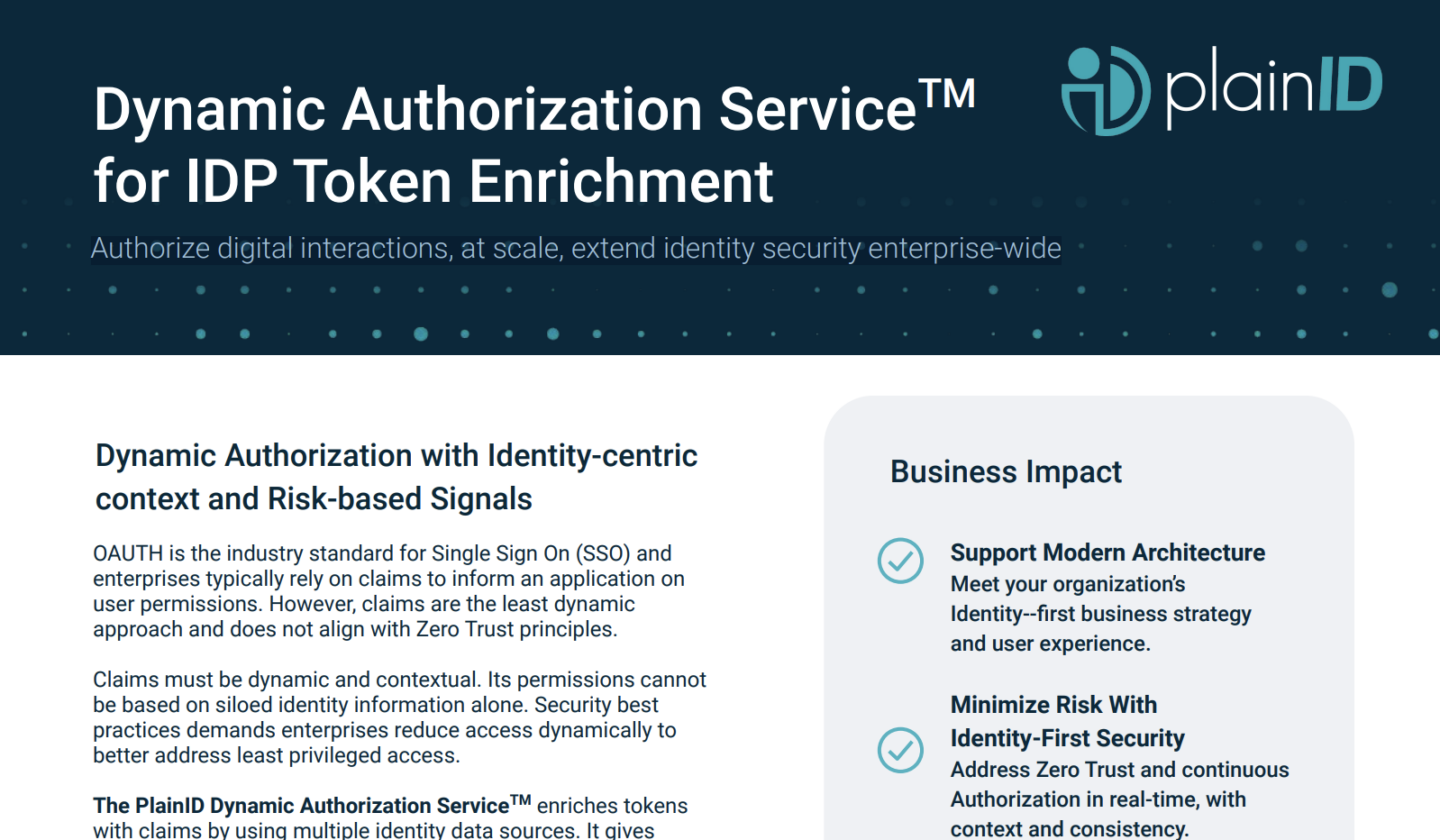Problem
The Complexity of Modern Identity Challenges
In today’s digital era, the primary security and business challenge is ensuring robust, comprehensive protection for identities and the diverse data they access. Ranging from workforce to customers, and even machines, the intricate relationship between identities and data has increasingly grown to be complex and unmanageable.
Modern businesses require innovative, flexible access control systems that can handle this level of complexity efficiently in order to achieve the highest level of assurance and compliance while delivering a seamless, user-friendly digital experience.
Solution
Revolutionizing Enterprise Identity Security
PlainID simplifies connecting identities to digital assets for organizations, clearly outlining who can access what and when – applying intelligent access decisions informed by entirety of your identity fabric. This enables organizations to apply real-time risk assessments that are custom-tailored to your business requirements.
PlainID’s flexible Policy-based Access Control (PBAC) fits seamlessly into your existing infrastructure, not only enhancing security but also improving the user experience, providing a balanced solution for modern enterprises navigating the digital landscape.
Business Impact Benefits
-
Consistent, Contextual, and Continuous Security
Implement security that leverages identity context in real-time and apply risk-based access control consistently across various aspects of your business.
-
Dynamic Authorization for Any Identity
Enable coarse- and fine-grained access. PlainID integrates with all leading identity providers to address: workforce, customers (B2C), third parties and supply chain partners (B2B), as well as machines and systems.
-
Balance Security and User Experience
Achieve the perfect balance between security and usability. PlainID enhances productivity and customer satisfaction for business growth.
-
Identity Aware Security at Every Layer
Drive access based on identity-context (e.g. role, location, device, etc.) through enterprise architecture layers: from Application, to API, and Microservices all the way through to the Data tier for effective Zero Trust.
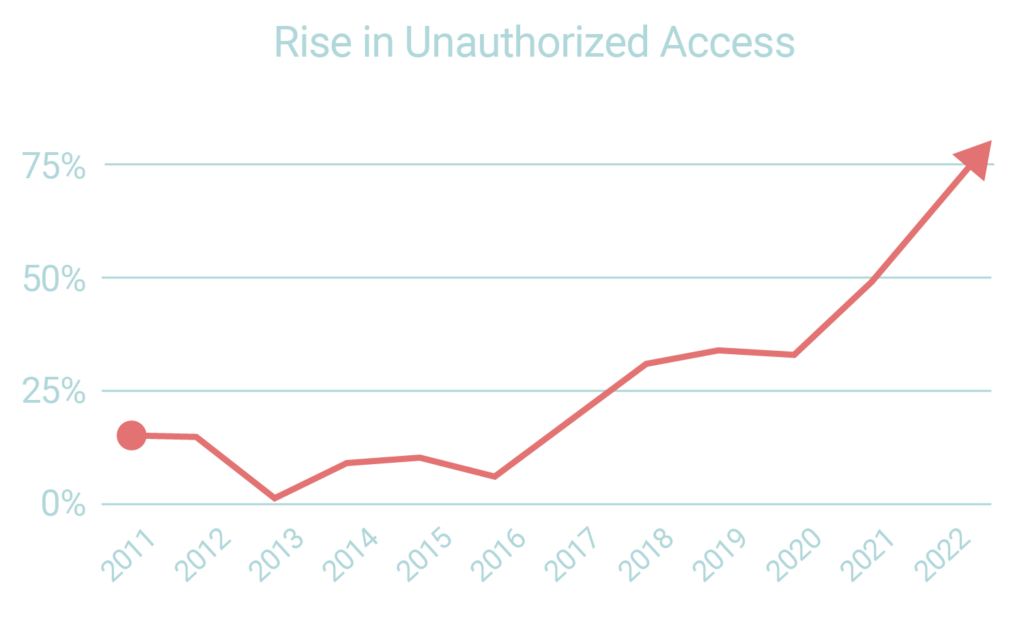
Identity Aware Security Use Cases
Workforce Access Control
Securely manage your distributed workforce, ensuring risk-based access to sensitive data. Identity-aware security addresses cross-border compliance, providing continuous protection and productivity.

Customers Access Control
Unify access controls across lines of business. Enhance digital experiences and comply with regulations to accelerate speed-to-market and drive customer growth and retention.

Access Control for Third Parties & Non-Employees
Mitigate third party and supply chain risk with access control for non-employee identities such as partners, contractors, and suppliers while maintaining agility and efficiency.
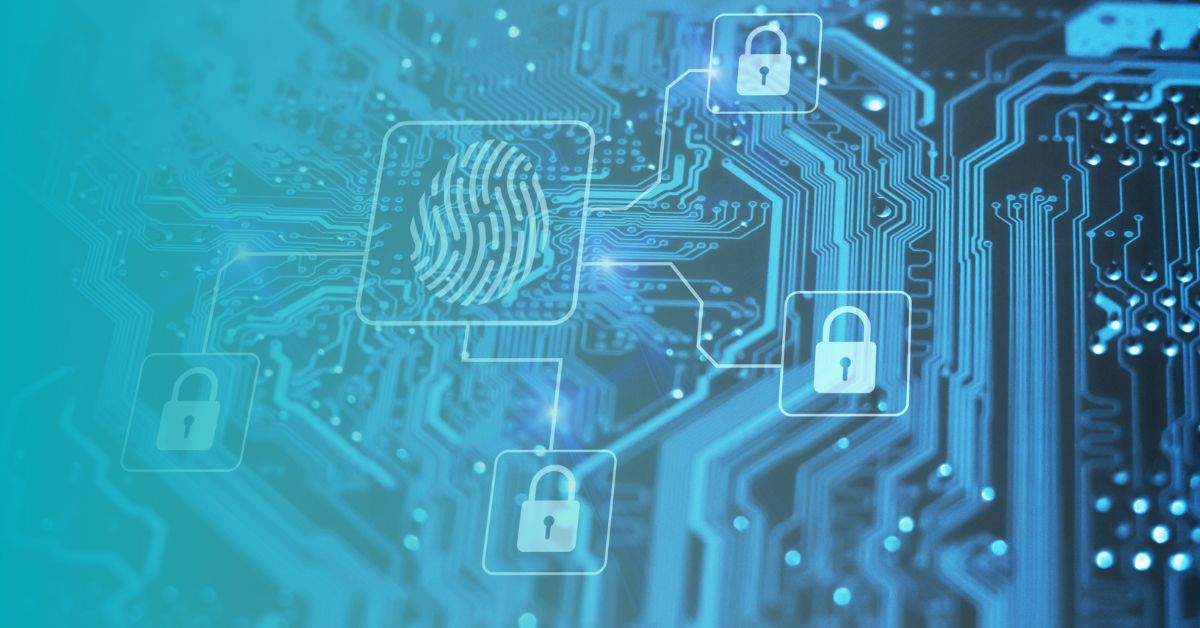
Access Control for Machine & Systems (M2M)
Ensure secure machine-to-machine communication with modern access controls. Enhance interconnectivity and compliance between devices and systems, supporting complex operational needs without sacrificing security.
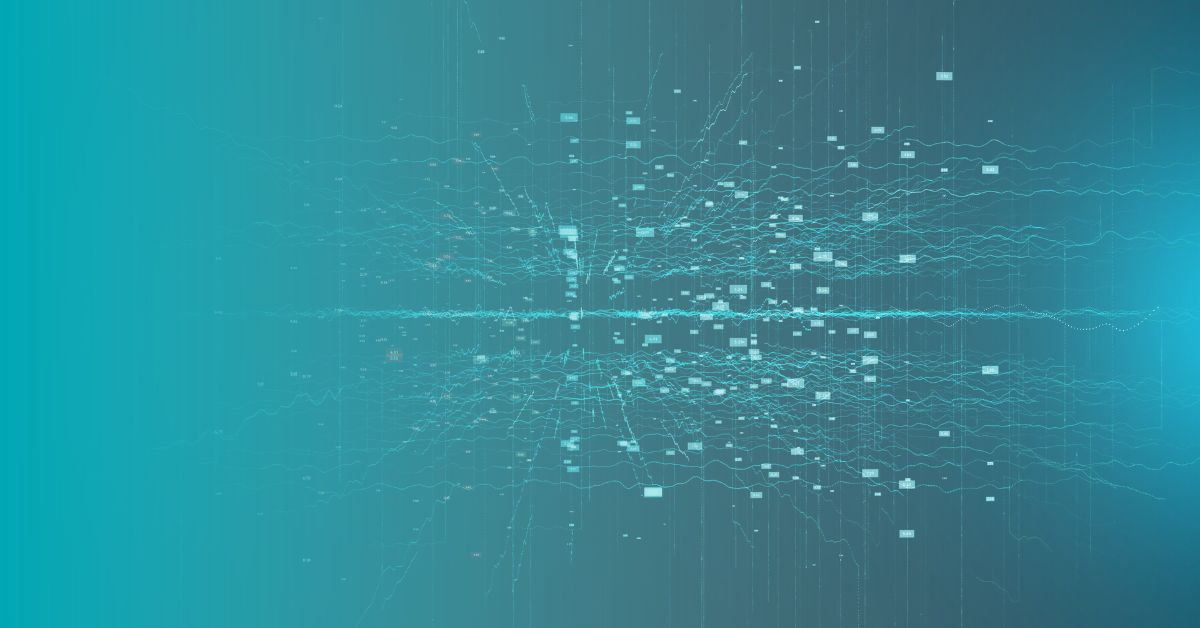
Identity Aware Security FAQs
Learn More About Our Identity Aware Security
Related Resources
